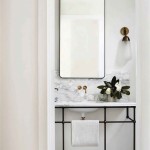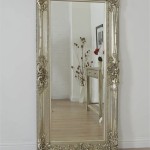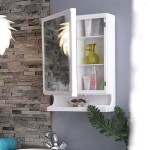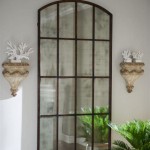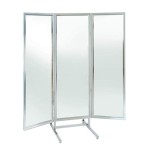Antique Dressing Table Mirror Hinges: A Guide to Identification and Restoration
Antique dressing tables, with their intricate carvings and elegant designs, are prized possessions for collectors and enthusiasts. A crucial element of these tables is the mirror, often attached with delicate and intricate hinges that add to the overall aesthetic appeal. These hinges, often made of brass, bronze, or iron, are not only functional but also possess historical significance and can reveal a lot about the table's origin and age. Understanding antique dressing table mirror hinges can help with their identification, restoration, and preservation.
Types of Hinges
Antique dressing table mirrors are commonly attached using several types of hinges, each with its own distinctive features and construction:
- Butt Hinges: These are the most common type, consisting of two leaves that are joined together with a pin. One leaf is fixed to the mirror frame, while the other is attached to the dressing table. Butt hinges can be plain or decorative, with variations in size, shape, and ornamentation.
- Strap Hinges: Also known as strap or "T" hinges, these are similar to butt hinges but have a wider leaf that extends beyond the edge of the mirror frame. This extended leaf provides additional support and strength. They often feature decorative elements like scrolls, leaves, or floral motifs.
- Pivot Hinges: These hinges utilize a central pivot point that allows the mirror to rotate freely, often seen in older dressing tables. Pivot hinges are typically concealed within the frame or the table top, making them less visible than other types.
- Lift Hinges: These hinges are designed to lift the mirror upward, allowing for a tilt or angle adjustment. Lift hinges are often found on vanity mirrors or dressing tables designed for specific functionality.
Identifying Antique Hinges
Identifying the type and age of antique mirror hinges requires careful examination and consideration of several factors:
- Material: The material used for the hinge can indicate its age. Brass and bronze were commonly used in the 18th and 19th centuries, while iron was more prevalent in earlier periods.
- Construction: Examine the hinge's construction for details like the hinge pin, the joinery, and the overall design. Specific techniques and patterns can be associated with certain time periods and regions.
- Style and Ornamentation: The style and ornamentation of the hinge can provide clues about its origin and age. For example, elaborate floral designs and scrolling elements were often associated with the Rococo period, while geometric patterns and streamlined forms became popular in the Art Deco era.
- Markings and Stamps: Look for any markings or stamps on the hinges, which could indicate the manufacturer, date, or origin. Some manufacturers stamped their name, location, or a symbol on their products.
Restoring Antique Mirror Hinges
Antique dressing table mirror hinges often require restoration to maintain their functionality and preserve their aesthetic appeal. Restoring hinges involves a combination of cleaning, repairs, and finishing techniques. Here are some key steps:
- Cleaning: Delicate cleaning with a soft brush and mild soap can remove surface dirt and grime. Avoid harsh chemicals or abrasives that could damage the metal.
- Repairs: Damaged hinges may require repairs such as replacing loose or missing screws, fixing broken leaves, or replacing the hinge pin. Consult a specialist if extensive repairs are needed.
- Lubrication: Moving parts of the hinge can be lubricated with a light oil to prevent squeaking and ensure smooth operation.
- Finishing: After cleaning and repairs, the hinge may benefit from a protective finish. Polishing with a brass or metal polish can restore shine and protect against tarnishing.
Restoring antique dressing table mirror hinges requires patience, attention to detail, and an understanding of their historical context. These hinges are not just functional components but also beautiful decorative elements that reflect the craftsmanship and artistry of past generations.

2 Polished Mirror Fittings Dressing Table Recessed 1 4 100 Brass Deco Thread Hinged Ball And Arm Watson Javanese Handicrafts Accessories

Steel Mirror Swivels Paxton Hardware

Pivot Mirror Hinges Paxton Hardware

Cheval Mirror Bra Kon Movements Swivel Brakon Bracket Hinge Dressing Table Brass

Antique Dressing Table Mirror For At Pamono

Cheval Bra Kon Mirror Movement Set Swivel Tilting Bracket Dressing Table

Cheval Mirror Bra Kon Movements Swivel Brakon Bracket Hinge Dressing Table Brass

Swing Movement Set 5 5cm Left And Right Small Polished Mirror Fittings Dressing Table Recessed 2 1 8 Brass Thread Hinged Ball Arm Met

2 Polished Mirror Fittings Dressing Table Recessed 1 4 100 Brass Deco Thread Hinged Ball And Arm Watson Javanese Handicrafts Accessories

Vintage Dressing Table Mirror Alt Interiors

